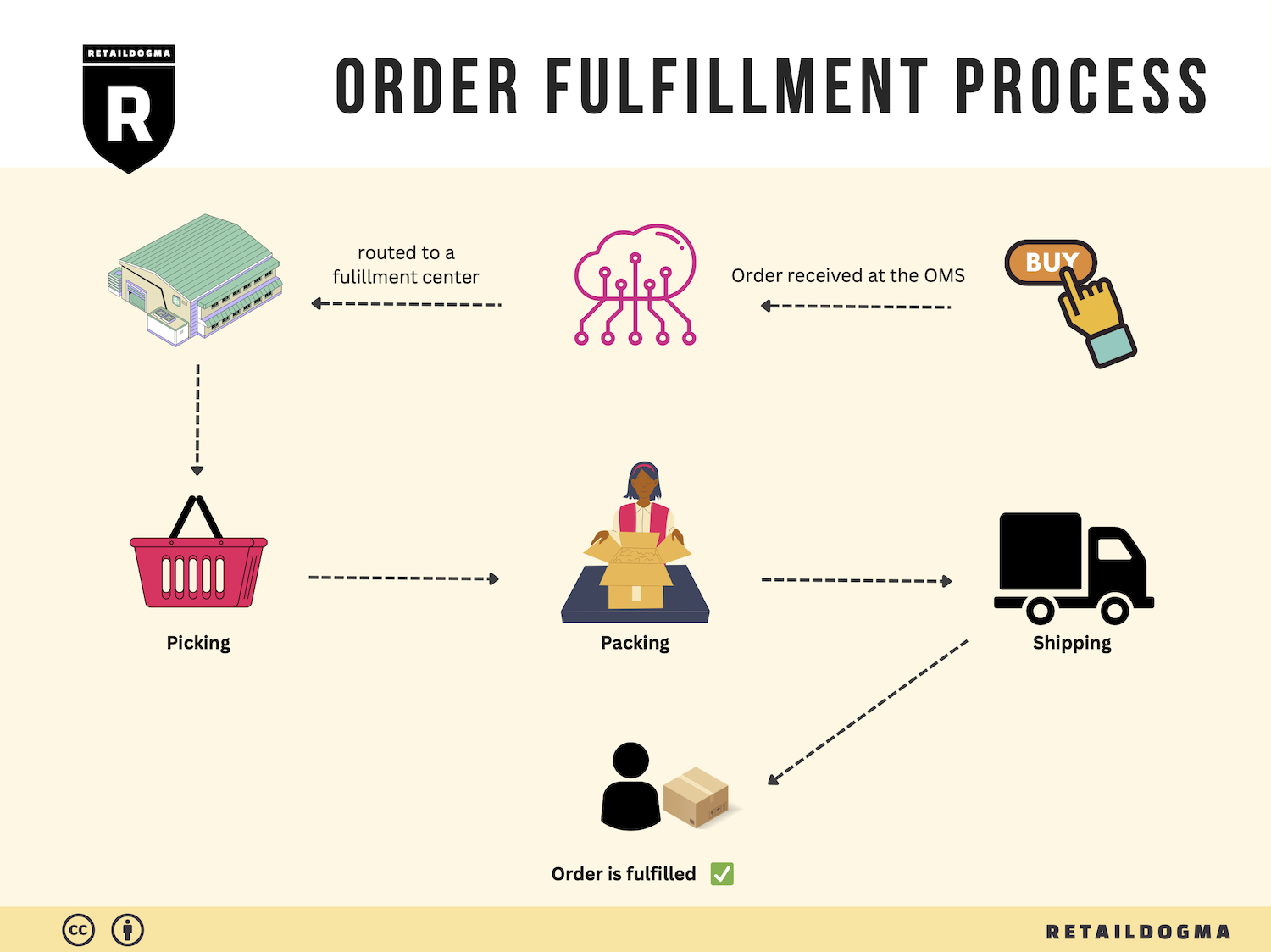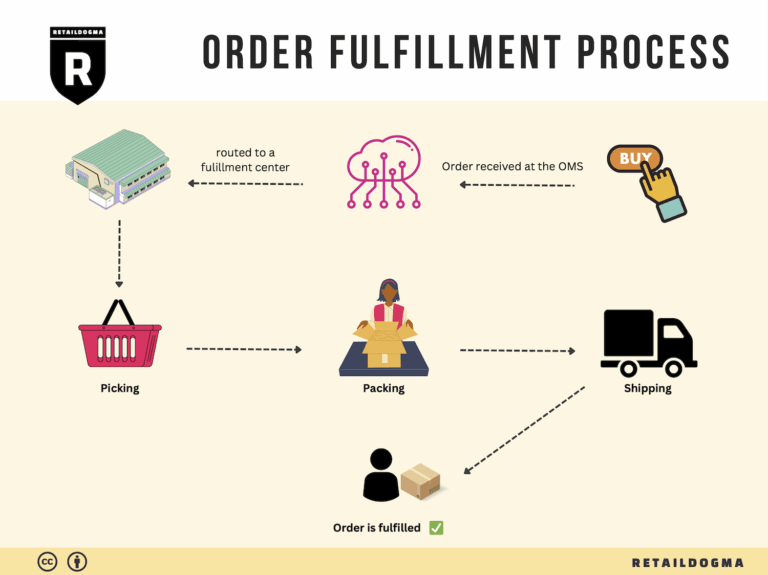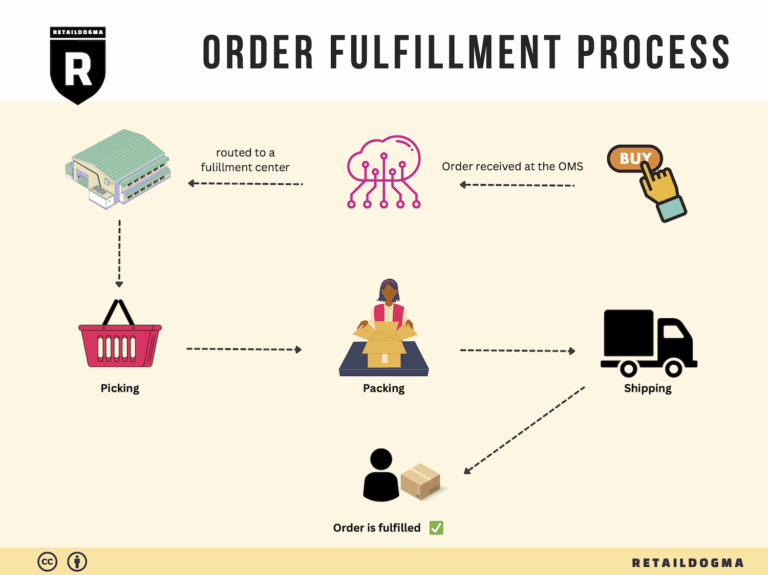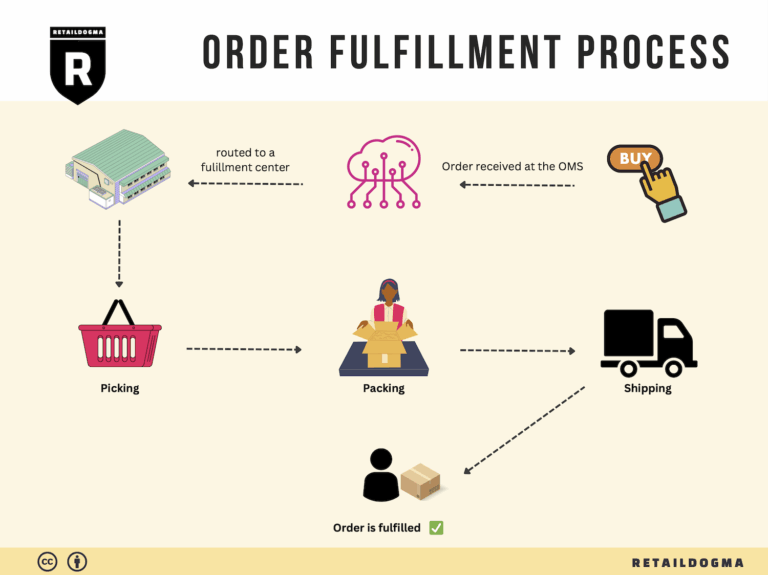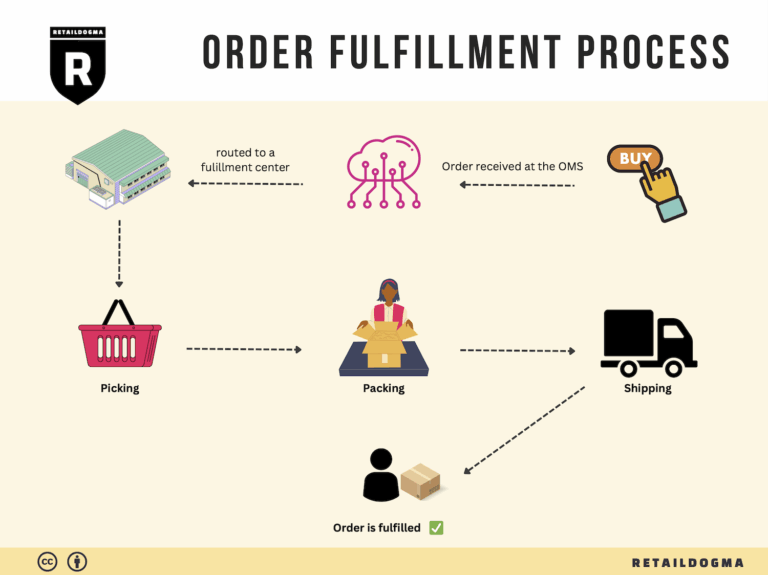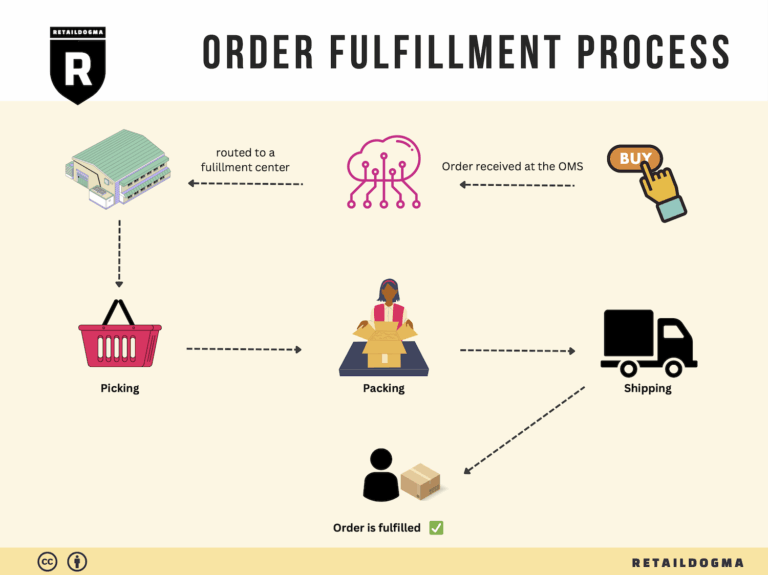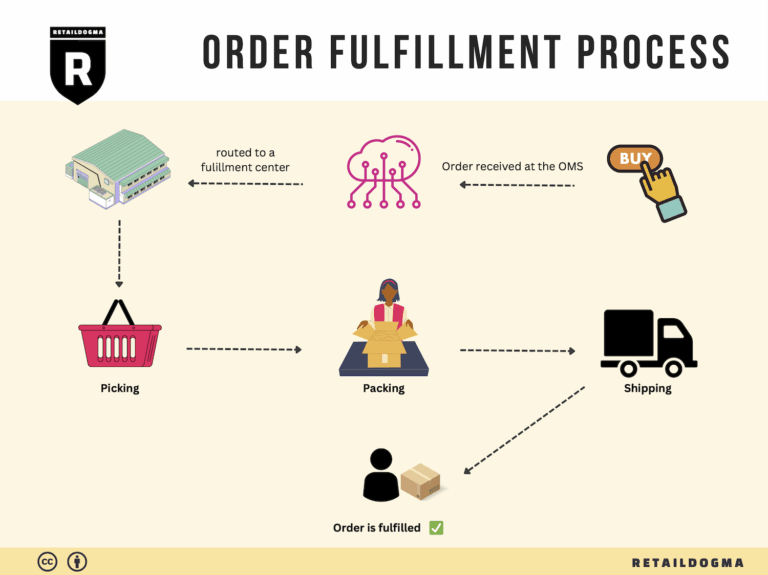What Is A Fulfillment Center? A Complete Guide (2025)
What is E-commerce Fulfillment? An Introduction for Growing Businesses
Understanding E-commerce Fulfillment: A Path to Streamlined Operations
For many growing online businesses, the thrill of increasing sales can quickly turn into a daunting challenge when it comes to packing and shipping orders. As your customer base expands, so does the complexity of logistics, leading to potential overwhelm. The fulfillment process—the intricate journey of getting a product from your warehouse to your customer’s doorstep—can become a source of frustration rather than a streamlined operation.
E-commerce fulfillment is essentially the backbone of your online business, encompassing all activities related to processing orders, picking and packing products, and shipping them to customers. In this guide, we will break down the various fulfillment models available to you, including Third-Party Logistics (3PL) and Fulfillment by Amazon (FBA), helping you navigate the options that best suit your business needs.
What This Guide Covers
-
Different Fulfillment Models: We’ll explore the most common fulfillment models, detailing the pros and cons of each. Whether you’re considering outsourcing to a 3PL provider or leveraging Amazon’s extensive fulfillment network, understanding these options is crucial for making informed decisions.
-
Core Fulfillment Services: You’ll gain insight into the core services that fulfillment partners typically offer, such as inventory management, order processing, shipping, and returns management. Knowing what to expect can help you better assess potential partners.
-
Choosing the Right Partner: Selecting a fulfillment partner is a significant decision that can impact your operational efficiency and customer satisfaction. We’ll provide practical tips on what to look for in a partner, including service levels, technology integration, and scalability.
-
Pricing Considerations: Understanding the costs associated with fulfillment is essential for budgeting and financial planning. We will break down the various pricing structures, including storage fees, fulfillment fees, and additional charges, to give you a clearer picture of potential expenses.
Empowering Your Logistics Decisions
The ultimate goal of this guide is to empower you with the knowledge to make smart, strategic decisions about your logistics and fulfillment processes. With the right approach, you can not only alleviate the stress associated with order fulfillment but also enhance your overall customer experience. By optimizing your fulfillment strategy, you can focus on what you do best—growing your business and delighting your customers.

What You’ll Learn In This Guide
- What is E-commerce Fulfillment? An Introduction for Growing Businesses
- The Order Fulfillment Process: From ‘Buy’ Button to Customer’s Door
- Comparing Fulfillment Models: In-House vs. 3PL vs. Dropshipping
- A Deep Dive into Amazon FBA: Pros, Cons, and Who It’s For
- Core Services Offered by Fulfillment Centers
- How to Choose a Fulfillment Partner: A 6-Point Checklist
- Understanding Fulfillment Pricing: A Breakdown of Common Fees
- Frequently Asked Questions (FAQs) about Fulfillment
- Conclusion: Is Outsourcing Fulfillment the Right Move for Your Business?
- Important Disclaimer
The Order Fulfillment Process: From ‘Buy’ Button to Customer’s Door
1. Receiving Inventory
The first step in the order fulfillment process is receiving inventory. When products arrive at your fulfillment center, they must be checked against the purchase order to ensure accuracy. This involves verifying quantities, inspecting for damages, and ensuring that the right products have been received.
This step is critical because inaccuracies at this stage can lead to stockouts or overstock situations, which can severely disrupt your supply chain. A key term associated with this process is SKU (Stock Keeping Unit), which is a unique identifier for each product that helps manage inventory effectively. Properly managing SKUs during the receiving phase allows for efficient tracking and organization of products in the warehouse.
2. Warehouse Storage
Once the inventory is received and verified, it is stored in the warehouse. Efficient storage is crucial for optimizing space and ensuring that products can be easily located when orders come in. This is where inventory management systems come into play, allowing businesses to categorize and track their stock levels in real-time.
The importance of this step lies in its impact on order accuracy and fulfillment speed. If products are stored logically and systematically, it reduces the time spent searching for items later. A key term here is location code, which refers to the specific area or bin within the warehouse where a product is stored. Using location codes helps streamline the picking process, ensuring that items can be retrieved quickly when orders are placed.
3. Order Picking
Order picking is the process of selecting items from the warehouse to fulfill a customer’s order. When an order is received, a pick list is generated, detailing the specific SKUs and quantities required for that order. Employees or automated systems then navigate the warehouse to gather these items.
This step is vital because the accuracy and efficiency of picking directly affect customer satisfaction. Errors in this stage can lead to incorrect shipments, resulting in returns and unhappy customers. A key term associated with this process is pick lists, which are documents or digital records that outline the items to be picked for each order. Optimizing the pick list can help reduce picking time and errors, enhancing overall operational efficiency.
4. Order Packing
After the items have been picked, they move to the packing stage. Here, products are securely packed for shipment. This involves selecting appropriate packing materials, ensuring that items are cushioned and protected during transit.
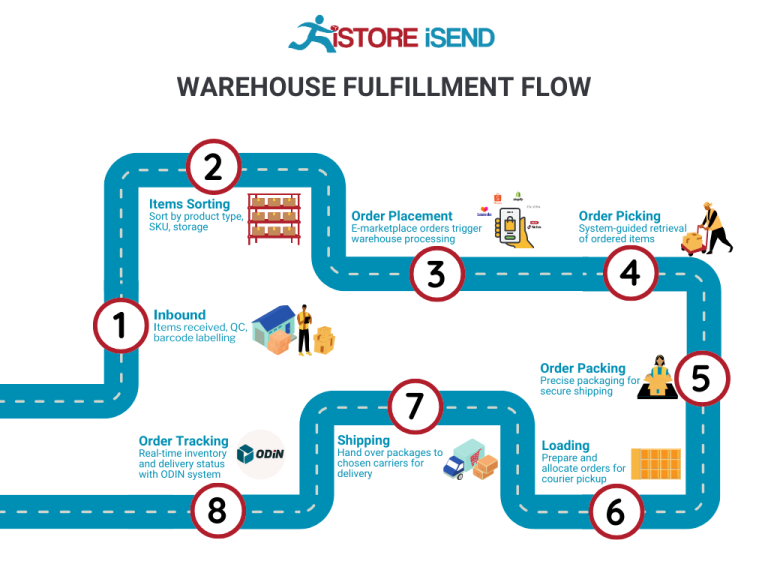
Packing is essential for maintaining product integrity and preventing damage during shipping. A well-packed order not only protects your products but also reflects your brand’s professionalism and attention to detail. A key term in this phase is packing slip, which is a document included in the package that lists the items enclosed and provides order details. Ensuring that packing slips are accurate and included with each order helps enhance transparency and customer trust.
5. Shipping & Delivery
The final step in the order fulfillment process is shipping and delivery. Once orders are packed, they are labeled and prepared for dispatch. Shipping involves selecting the appropriate carrier and shipping method based on customer preferences and delivery timelines.
This step is crucial for meeting customer expectations regarding delivery speed and accuracy. Delays in shipping can lead to dissatisfaction and potential loss of future sales. A key term associated with this stage is shipping manifest, which is a comprehensive list of all the shipments being sent out, detailing the contents of each package and the destination. This document is essential for tracking shipments and ensuring accurate delivery.
In conclusion, mastering the order fulfillment process from receiving inventory to shipping and delivery is vital for e-commerce businesses looking to scale. By understanding each step and its importance, business owners and operations managers can implement effective strategies to enhance their fulfillment processes, thereby improving customer satisfaction and driving growth.
Comparing Fulfillment Models: In-House vs. 3PL vs. Dropshipping
Fulfillment Model Comparison
| Model | Who Handles Inventory | Best For (Business Stage) | Key Advantage | Key Disadvantage |
|---|---|---|---|---|
| In-House Fulfillment | Your team | Startups to established | Complete control over operations | High overhead and labor costs |
| Third-Party Logistics (3PL) | 3PL provider | Growth and scaling | Scalability and expertise | Less control over fulfillment process |
| Dropshipping | Supplier | Startups and niche brands | Low upfront costs and inventory risk | Lower profit margins and potential quality issues |
In-House Fulfillment
In-house fulfillment involves managing your own storage, inventory management, and order processing. This model is typically suited for businesses that are in their early stages or have established operations and wish to maintain control over every aspect of their logistics. The primary advantage of in-house fulfillment is the complete control it provides; businesses can customize their processes, prioritize customer service, and implement quality control measures directly. However, this model also comes with significant drawbacks, including high overhead costs associated with warehousing, staffing, and technology. As sales volumes increase, businesses may find it challenging to scale their operations without incurring substantial additional costs. Moreover, the need for logistics expertise can become a burden, diverting focus from core business activities.
Third-Party Logistics (3PL)
Third-party logistics (3PL) providers offer a middle ground between in-house fulfillment and dropshipping. In this model, businesses outsource their warehousing and order fulfillment to specialized logistics companies. This solution is particularly advantageous for growing businesses looking to scale operations without the burdens of managing inventory directly. 3PL providers typically have established networks and expertise that can lead to faster shipping times, reduced operational costs, and improved efficiency. They can handle a range of logistics tasks, including inventory management, packaging, and shipping. However, the key disadvantage of using a 3PL is the loss of control over the fulfillment process. Businesses must rely on the 3PL’s systems and processes, which can lead to inconsistencies in customer experience if the provider fails to meet expectations. Additionally, there may be hidden fees that can impact profitability if not carefully managed.
Dropshipping
Dropshipping is a fulfillment model where businesses sell products without holding inventory. Instead, when a customer makes a purchase, the order is forwarded to a supplier who then ships the product directly to the customer. This model is especially appealing for startups and niche brands that want to minimize upfront costs and inventory risk. The primary advantage of dropshipping is the low barrier to entry, allowing entrepreneurs to test products and markets without significant financial investment. However, dropshipping also presents challenges. Profit margins are often lower because suppliers take a cut, and quality control can be problematic since the retailer has no direct oversight of the products being shipped. Additionally, shipping times can vary, leading to potential customer dissatisfaction. Managing supplier relationships and ensuring timely fulfillment can also be complex, particularly as the business scales.
Conclusion
Each fulfillment model—In-House, 3PL, and Dropshipping—has its unique advantages and disadvantages, making the choice highly dependent on the specific needs and stage of your business. Understanding these models will help you tailor your fulfillment strategy, aligning it with your growth goals and operational capabilities. As you consider scaling your e-commerce operations, weigh the control and cost implications of each model against your business objectives to make an informed decision.
A Deep Dive into Amazon FBA: Pros, Cons, and Who It’s For
Understanding Fulfillment by Amazon (FBA)
Fulfillment by Amazon (FBA) is a service that allows e-commerce sellers to store their products in Amazon’s fulfillment centers. Amazon takes care of storage, packaging, and shipping, enabling sellers to leverage Amazon’s logistics network. This service is designed to streamline the order fulfillment process, making it easier for businesses to manage their inventory and deliver products to customers efficiently.
How FBA Works
-
Account Setup: To start using FBA, sellers must create an Amazon Seller account and enroll in the FBA program.
-
Inventory Management: Sellers send their products to Amazon’s fulfillment centers. Amazon provides guidelines on how to prepare and package products for shipment to ensure compliance with their standards.
-
Order Processing: When a customer places an order for a product listed in FBA, Amazon takes over. The order is processed, and Amazon’s fulfillment associates pick, pack, and ship the order directly to the customer.
-
Customer Service: Amazon also handles customer service inquiries and returns for FBA orders, providing a seamless experience for both sellers and buyers.
-
Tracking and Reporting: Sellers can monitor their inventory levels and track sales performance through the Seller Central dashboard, which provides insights into sales metrics and order fulfillment efficiency.
Pros of Fulfillment by Amazon
-
Prime Eligibility: FBA products are eligible for Amazon Prime, which attracts a large customer base that values fast, free shipping. This can significantly boost sales as Prime members are more likely to purchase products that offer this benefit.
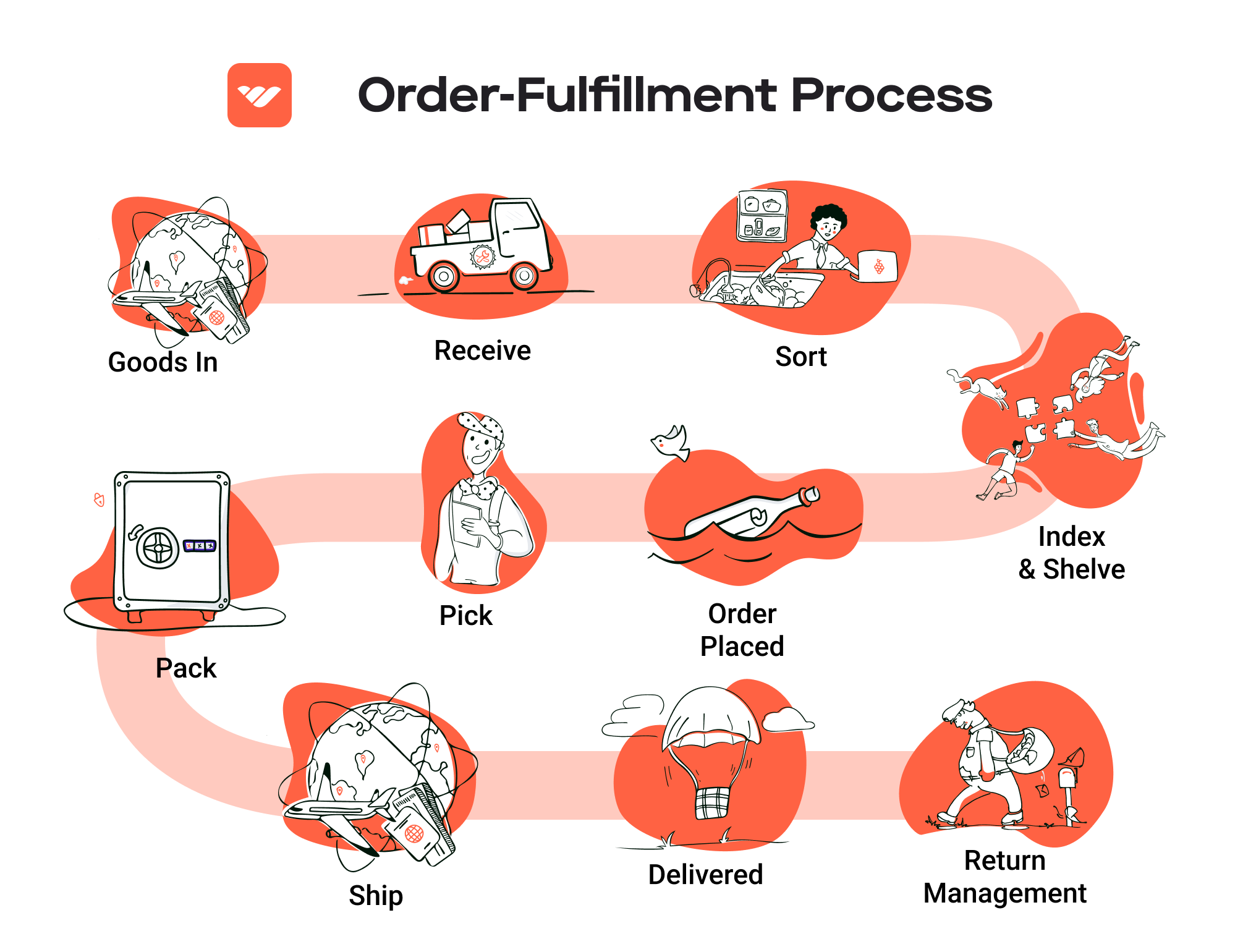
-
Customer Trust and Credibility: Selling through Amazon’s platform instills a sense of trust among customers. They are more likely to purchase from a seller that offers FBA due to Amazon’s reputation for reliability and customer service.
-
Multi-Channel Fulfillment: FBA can be integrated with other sales channels, allowing sellers to fulfill orders from their own websites or other marketplaces. This expands reach and simplifies logistics, as sellers can manage multiple sales channels through Amazon’s infrastructure.
-
Scalability: FBA allows businesses to scale without the burden of managing their own warehousing and fulfillment operations. Sellers can focus on growing their business while Amazon handles the logistics.
-
Inventory Management: Amazon’s system provides tools and analytics to help sellers manage their inventory more effectively, ensuring that stock levels are optimized and orders are fulfilled promptly.
Cons of Fulfillment by Amazon
-
High Fees: FBA comes with a range of fees, including storage fees, fulfillment fees, and potential long-term storage fees. These costs can accumulate quickly, especially during peak seasons, cutting into profit margins.
-
Strict Inventory Rules: Amazon enforces strict guidelines regarding inventory preparation, labeling, and storage. Non-compliance can lead to additional fees or even suspension of selling privileges.
-
Commingling Risks: FBA uses a commingled inventory model, meaning that products from different sellers may be stored together. This can pose risks if a customer receives a product that is defective or not as described, potentially harming the seller’s reputation.
-
Limited Control: By using FBA, sellers relinquish some control over the fulfillment process. They must rely on Amazon’s systems and policies, which may not always align with their business strategies or customer service philosophies.
-
Dependency on Amazon: Relying heavily on FBA may lead to a lack of diversification in fulfillment strategies. This dependence can be risky if Amazon changes its policies or fees, impacting sellers’ profitability.
Who is FBA Best For?
Fulfillment by Amazon is particularly well-suited for:
-
New Sellers: Entrepreneurs just starting their e-commerce journey can benefit from Amazon’s extensive logistics network and customer base without the need for upfront investment in warehousing and fulfillment infrastructure.
-
Small to Medium-Sized Businesses: Companies looking to scale quickly can leverage FBA to handle increased order volumes without the complexity of managing logistics in-house.
-
Brands with High Sales Velocity: Sellers with fast-moving products can maximize their profit potential by utilizing FBA’s efficient fulfillment processes and Prime eligibility.
-
Multi-Channel Sellers: Brands that sell across various platforms can benefit from FBA’s multi-channel fulfillment capabilities, allowing them to streamline logistics and improve delivery times.
-
Sellers Focused on Customer Experience: Brands that prioritize customer satisfaction and fast shipping will find FBA advantageous, as it helps maintain high service levels.
In conclusion, Fulfillment by Amazon provides a powerful solution for e-commerce businesses looking to enhance their order fulfillment processes and tap into Amazon’s vast customer base. However, it is essential for sellers to weigh the pros and cons carefully, considering their unique business needs and strategies before committing to the program.
Core Services Offered by Fulfillment Centers
Inventory Management & Warehousing
Inventory management and warehousing are foundational services provided by fulfillment centers. This involves the systematic control of stock levels, ensuring that products are stored efficiently and organized properly within the warehouse. Fulfillment centers utilize advanced inventory management software that tracks inventory levels in real-time, allowing businesses to maintain optimal stock levels and reduce the risk of stockouts or overstock situations.
The benefits of robust inventory management are multi-faceted. For e-commerce businesses, it means improved cash flow management since funds are not tied up in excess inventory. Additionally, accurate inventory tracking allows for better forecasting and planning, leading to reduced holding costs and enhanced order fulfillment speed. By outsourcing warehousing to fulfillment centers, businesses can focus on their core operations while trusting that their inventory is being managed effectively and securely.
Pick and Pack Services
Pick and pack services are essential for the efficient processing of customer orders. In this service, fulfillment center staff ‘pick’ products from the warehouse shelves based on customer orders and then ‘pack’ them securely for shipment. This process is often automated with the use of technology and order management systems that streamline the workflow, ensuring accuracy and speed.
The primary benefit of pick and pack services for e-commerce businesses is the acceleration of order fulfillment. Fast and accurate order processing enhances customer satisfaction, as consumers increasingly expect quick delivery times. Furthermore, fulfillment centers often implement quality control measures during this process, reducing errors and the likelihood of returns. By outsourcing pick and pack operations, businesses can scale their order volumes without the need for significant investments in labor and infrastructure.
Kitting and Assembly
Kitting and assembly services involve grouping individual items into ready-to-ship sets, or assembling products that require multiple components to be packaged together. This service is particularly valuable for businesses that offer products that are frequently sold as bundles or require assembly before shipping, such as subscription boxes or complex product kits.
The advantages of kitting and assembly services extend beyond just convenience. By providing these services, fulfillment centers can help e-commerce businesses streamline their production processes, reduce shipping costs (by sending fewer packages), and enhance the customer experience through well-packaged and thoughtfully assembled products. This capability allows businesses to differentiate their offerings in a competitive market, potentially leading to increased sales and customer loyalty.
Returns Management (Reverse Logistics)
Returns management, also known as reverse logistics, is a critical service offered by fulfillment centers that handles the return of products from customers back to the seller. This process includes managing returned inventory, inspecting items, restocking, and processing refunds or exchanges. An efficient returns management system is essential for maintaining customer satisfaction and loyalty, as it directly impacts the shopping experience.
For e-commerce businesses, effective returns management can significantly reduce operational costs and enhance customer retention. By outsourcing this function to fulfillment centers, businesses can benefit from established processes and systems that ensure returns are handled promptly and efficiently. This not only minimizes losses associated with returned goods but also fosters trust with customers who appreciate a hassle-free return experience. In an era where consumers prioritize convenience, a robust returns management system can be a key differentiator for e-commerce brands.
Conclusion
In summary, fulfillment centers provide a comprehensive suite of services designed to streamline e-commerce operations. From inventory management and warehousing to pick and pack services, kitting and assembly, and returns management, these services enable businesses to scale efficiently while maintaining high levels of customer satisfaction. By leveraging the expertise and resources of fulfillment centers, e-commerce businesses can focus on growth, innovation, and delivering exceptional value to their customers.
How to Choose a Fulfillment Partner: A 6-Point Checklist
Location & Warehouse Network
Importance: The geographical location of your fulfillment partner’s warehouses can significantly impact shipping times and costs. A partner with strategically placed warehouses can ensure faster delivery to your customers, which is crucial for maintaining a competitive edge in today’s market.
Questions to Ask:
– Where are your warehouses located, and how do they align with our primary customer demographics?
– What is the average shipping time to major regions?
– Do you have the ability to expand your warehouse network if our needs change?
Technology & Integrations
Importance: In an increasingly digital world, the technology used by your fulfillment partner can streamline operations and improve order accuracy. A partner that offers robust technology solutions can help you automate processes, track inventory in real time, and provide insights into your logistics.
Questions to Ask:
– What inventory management systems do you use, and how do they integrate with our e-commerce platforms (e.g., Shopify, WooCommerce)?
– Can you provide API access for real-time data sharing?
– How do you handle order tracking and customer notifications?
Specializations (e.g., cold storage, oversized items)
Importance: Depending on your product offerings, you may require a fulfillment partner with specialized capabilities. For instance, if you sell perishable goods, choosing a partner with cold storage facilities is essential. Similarly, if you deal with oversized items, ensure the partner has the necessary infrastructure to handle such products.
Questions to Ask:
– What types of products do you specialize in handling?
– Do you have facilities for temperature-sensitive items, and what measures do you take to ensure product integrity?
– How do you manage the storage and shipping of oversized or bulky items?
Scalability & Capacity
Importance: As your business grows, your fulfillment needs will likely evolve. A fulfillment partner that can scale with you can save you from the hassle and costs associated with switching providers. It’s essential to ensure that your partner has the capacity to accommodate increased order volumes without compromising service quality.
Questions to Ask:
– What is your current capacity, and how do you plan to scale in the next few years?
– Can you handle seasonal spikes in demand, and what strategies do you have in place to manage these fluctuations?
– How do you ensure that you won’t run out of space or resources during peak times?
Pricing and Contracts
Importance: Understanding the cost structure and contractual obligations is crucial for budgeting and financial planning. A transparent pricing model helps you avoid unexpected fees and ensures that you can maintain profitability as you scale.
Questions to Ask:
– What are your standard pricing models for storage, picking, packing, and shipping?
– Are there additional fees (e.g., for returns, special handling, or peak seasons) that we should be aware of?
– Can you provide a sample contract, and what are the terms for cancellation or modifications?
Customer Support & Reviews
Importance: Exceptional customer service can make or break your partnership with a fulfillment provider. A responsive support team can resolve issues quickly, minimizing disruptions to your operations. Additionally, reviews and testimonials can provide insight into a partner’s reliability and service quality.
Questions to Ask:
– What customer support channels do you offer (e.g., phone, email, chat), and what are your response times?
– Can you share references or case studies from other clients in our industry?
– How do you handle disputes or issues that may arise during the fulfillment process?
Conclusion
Choosing the right fulfillment partner is a critical decision that can significantly impact your e-commerce business’s efficiency and customer satisfaction. By using this checklist, you can systematically evaluate potential partners based on essential criteria, ensuring that you make an informed choice that aligns with your business goals. Remember, the right partner will not only fulfill orders but will also contribute to your overall growth strategy.
Understanding Fulfillment Pricing: A Breakdown of Common Fees
Initial Setup Fees
When engaging with a multi-channel fulfillment provider, businesses often encounter initial setup fees. These are one-time charges that cover the costs associated with creating and configuring your account, integrating your sales channels with the fulfillment platform, and establishing any necessary technology connections. The setup process may involve data migration, system configurations, and the development of custom integrations to ensure smooth operations across different sales platforms.
The calculation of these fees varies by provider but typically includes a base fee plus additional charges for specific integrations or customizations. For example, a provider might charge a flat fee for account setup and additional fees per channel integrated, which could range from a few hundred to several thousand dollars, depending on the complexity of the integration.
Receiving Fees
Receiving fees are charged when inventory is sent to the fulfillment center. These fees cover the labor and resources required to inspect, count, and store incoming inventory. The calculation of receiving fees usually depends on the volume of goods being received and can be structured as a flat fee per shipment or based on the number of pallets or items processed.
For instance, a typical structure may involve a fee of $25 per pallet, or a charge per item that may range from $0.10 to $0.50, depending on the fulfillment center’s pricing model. It’s essential to clarify whether the receiving fee includes services such as labeling or bundling, as these can significantly affect overall costs.
Storage Fees (per pallet/bin)
Storage fees are recurring charges for keeping your inventory at the fulfillment center. These fees are typically calculated based on the amount of space your inventory occupies, measured in pallets or bins. Most fulfillment centers charge a monthly fee, which can vary based on the location and the time of year.
For example, storage fees might be $15 per pallet per month or $5 per bin, with potential seasonal adjustments during peak periods like the holiday season when demand for space increases. Businesses should pay close attention to the volume of their inventory and plan accordingly to avoid excessive storage costs, especially for products with slower turnover rates.
Pick & Pack Fees (per item/order)
Pick and pack fees are incurred each time an order is fulfilled. These fees cover the labor involved in picking items from inventory, packing them securely for shipment, and preparing them for delivery. The calculation of pick and pack fees often depends on the number of items in an order, with tiered pricing structures commonly employed.
For instance, a fulfillment center may charge $1.00 for the first item and $0.50 for each additional item in the same order. This means that a three-item order could incur a total pick and pack fee of $2.00. Additionally, some providers may offer discounts for larger orders, which can help reduce costs for businesses with high order volumes.
Shipping Fees
Shipping fees encompass the costs associated with delivering orders to customers. These fees can vary widely based on factors such as the destination, shipping method, package weight, and dimensions. Fulfillment providers typically offer several shipping options, including standard, expedited, and overnight delivery, each with its associated costs.
Shipping fees are calculated based on the weight and size of the package, as well as the shipping speed selected. For example, a standard shipping fee might start at $5 for packages under a certain weight, while expedited shipping could range from $10 to $20 or more. It is crucial for businesses to understand the shipping options available and how they impact overall fulfillment costs.
Tips for Getting an Accurate Quote
To ensure that you receive an accurate quote from fulfillment providers, consider the following tips:
-
Be Specific About Your Needs: Clearly communicate your inventory volume, product dimensions, and order frequency. This information will help providers give you a more precise estimate.
-
Request a Detailed Breakdown: Ask for a detailed breakdown of all potential fees, including initial setup, receiving, storage, pick & pack, and shipping fees. This will allow you to compare providers effectively.
-
Inquire About Discounts: Many fulfillment centers offer discounts for larger volumes or long-term contracts. Inquire about these options to optimize your costs.
-
Evaluate Seasonal Variations: Understand how fees may fluctuate during peak seasons and whether the provider has provisions to manage these changes effectively.
-
Consider Additional Services: If you require extra services such as kitting, labeling, or returns management, ensure these are included in your quote to avoid unexpected costs later on.
By following these guidelines, e-commerce business owners can navigate the complexities of fulfillment pricing more effectively, enabling them to make informed decisions as they scale their operations.
Frequently Asked Questions (FAQs) about Fulfillment
1. What is multi-channel fulfillment?
Multi-channel fulfillment is the process of managing inventory and order fulfillment across multiple sales channels, such as your e-commerce website, marketplaces like Amazon and eBay, and social media platforms. This strategy allows businesses to streamline their logistics and provide customers with a cohesive shopping experience regardless of where they make their purchase.
2. How does multi-channel fulfillment work?
In multi-channel fulfillment, a business stores its inventory in one or more fulfillment centers, which handle the picking, packing, and shipping of orders from various sales channels. Orders placed across different platforms are automatically sent to the fulfillment center, where they are processed and shipped to customers. This integration helps to maintain inventory accuracy and optimize shipping times.
3. What is the difference between a warehouse and a fulfillment center?
A warehouse primarily serves as a storage space for goods, focusing on inventory management. In contrast, a fulfillment center is designed for order processing and shipping. Fulfillment centers are equipped to handle the logistics of picking, packing, and shipping orders directly to customers, often providing additional services like returns management and customer support.
4. What is a 3PL (Third-Party Logistics) provider?
A 3PL provider is an external company that manages logistics and fulfillment services for a business. This can include warehousing, inventory management, order processing, and shipping. By partnering with a 3PL, e-commerce businesses can scale their operations without the overhead costs associated with maintaining their own fulfillment infrastructure.
5. How much do fulfillment services cost?
Fulfillment service costs can vary widely based on several factors, including order volume, storage needs, and shipping speed. Typical costs include storage fees (charged monthly based on the space your inventory occupies), fulfillment fees (charged per order processed), and additional fees for services such as returns or special packaging. It’s essential to review pricing structures from various providers to determine the best fit for your business.
6. What are the benefits of using multi-channel fulfillment?
The benefits of multi-channel fulfillment include increased operational efficiency, improved customer satisfaction through faster shipping options, and better inventory management across platforms. By utilizing a fulfillment service, businesses can focus on core activities such as marketing and product development while leaving logistics to experts.
7. How do I integrate my sales channels with a fulfillment service?
Integrating your sales channels with a fulfillment service typically involves connecting your e-commerce platform (like Shopify, WooCommerce, or Magento) with the fulfillment provider’s system. Most fulfillment services offer APIs or plugins to facilitate this integration, allowing for real-time order processing and inventory updates.
8. Can I use multi-channel fulfillment for international shipping?
Yes, many fulfillment services offer international shipping options. However, it’s important to check the specific capabilities of your chosen provider, as not all fulfillment centers handle international orders. Additionally, international shipping may involve higher costs and longer delivery times, which should be communicated to your customers.
9. What should I consider when choosing a fulfillment partner?
When selecting a fulfillment partner, consider factors such as the provider’s shipping speed, location of fulfillment centers, pricing structure, scalability, and the ability to integrate with your existing sales channels. Additionally, evaluate their customer service and returns management processes, as these can significantly impact your customers’ experience.
10. How can I optimize my multi-channel fulfillment strategy?
To optimize your multi-channel fulfillment strategy, regularly analyze your sales data to identify trends and adjust inventory levels accordingly. Consider automating order processing and inventory management to reduce manual errors. Additionally, maintain open communication with your fulfillment partner to address any operational challenges and explore opportunities for improving shipping efficiency and reducing costs.
Conclusion: Is Outsourcing Fulfillment the Right Move for Your Business?
Evaluating the Benefits of Outsourcing Fulfillment
Outsourcing fulfillment can be a transformative decision for e-commerce businesses seeking to streamline operations and enhance customer satisfaction. By leveraging a fulfillment service, you can save significant time and resources. This allows your team to focus on core business activities, such as marketing, product development, and customer engagement, rather than getting bogged down in logistics and shipping details.
Scalability is another compelling reason to consider outsourcing. As your business grows, managing inventory and order fulfillment in-house can quickly become overwhelming. Fulfillment partners offer the infrastructure and expertise necessary to scale operations efficiently, whether you’re handling seasonal spikes or expanding into new markets. Their established networks can provide faster shipping options, helping you meet customer expectations for delivery speed, which is increasingly critical in today’s competitive landscape.
Moreover, partnering with a fulfillment service grants access to industry expertise that can enhance your logistics strategy. These providers are well-versed in best practices, compliance regulations, and cost-effective shipping solutions, which can translate into improved operational efficiency and cost savings.
However, not all fulfillment partners are created equal. It’s crucial to choose a provider that aligns with your business goals, understands your target market, and can adapt to your specific needs. A thorough evaluation of potential partners based on their technology, customer service, and pricing models will be essential to ensure a successful collaboration.
As a strategic next step, consider conducting an audit of your current shipping and fulfillment processes. Identify bottlenecks, assess your capacity for growth, and determine if a fulfillment partner could enhance your operational efficiency. By taking this proactive approach, you can position your business for sustainable growth and improved customer satisfaction.
Important Disclaimer
⚠️ Important Disclaimer
The information in this guide is for educational purposes. Fulfillment services, pricing, and platform features change frequently. Always conduct your own due diligence and consult with providers directly before making business decisions.
